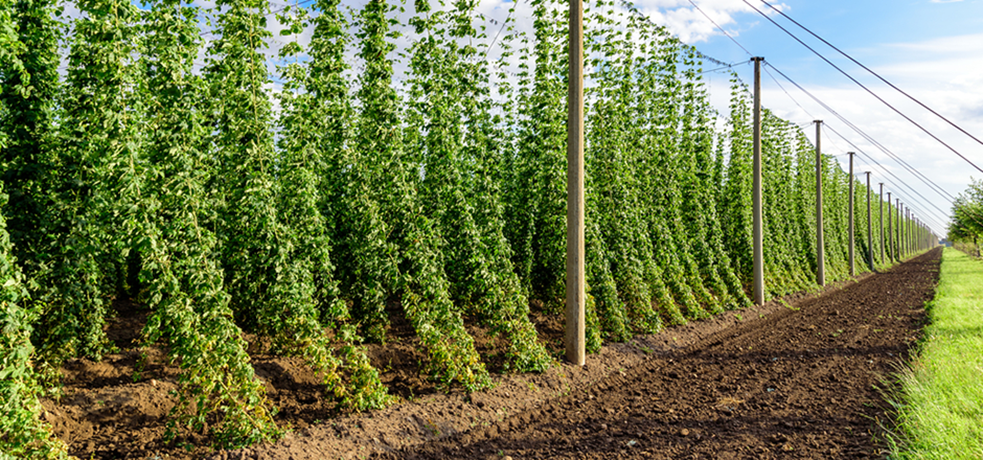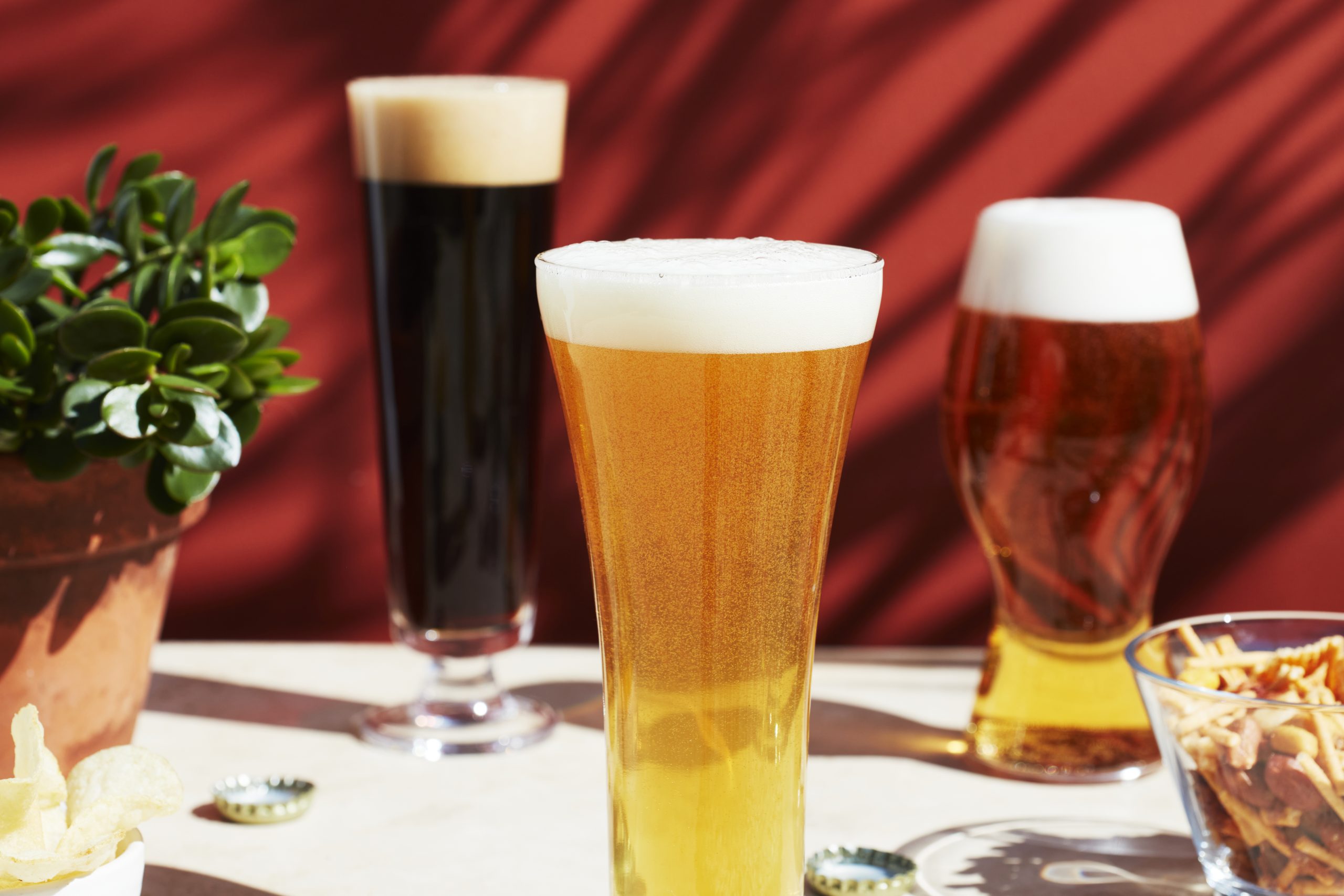

THE BREW
- The Brew
All about the hop
Read Time 4 Minutes
Posted 31 Aug 2022
By winVintage
The subject of many a pun, hops are the plant parts used in brewing beer. Here’s what you should know about them.
Have you ever seen a hop? They’re odd looking things, almost alien in shape, strung up in a farmer’s field like rows of tiny green grenades – and with flavour just as powerful. Hops are the weapon of choice for brewers all around the world. Quite simply, without them, beer would not be beer as we know and love it.
Botanically, hops are the cone-shaped flowers – or strobilus – of the hop plant Humulus lupulus. This makes hops a part of the Cannabaceae or hemp family of plants, which means that hops and hemp (cannabis) are pretty much cousins – though unlike cannabis, hops contain none of the psychoactive elements. Instead, hops are used at various stages of brewing to impart their alpha acids and oils, which give beer its characteristic flavour.


Hops take centre stage in beers such as IPAs, providing them with their distinctive pine oil, often citrus and sometimes grassy aromas and flavours, as well as bitterness and acidity. However, in dark beers, like stouts, hops are less noticeable, aromatically or flavour wise. Rather, hops give darker beers their structure and backbone, providing them with a greater sense of depth and complexity.
Of course, it all depends on what hops are used and when they are added to the brewing process. In a nutshell, hops are added earlier for bittering, half way for flavour and later for aroma, because fewer aromatic oils are lost to evaporation.
There are around 80 commercial hop varieties, and each has a different aroma, flavour and bitterness expression. Brewers use specific varieties to craft and create a specific beer style, like lagers, ales and stouts. Here are a few you’re likely to hear about most often.

Galaxy
Galaxy is Australia’s superstar hop variety. Born in Tasmania, it’s one of the most versatile Australian-bred hops ever used to brew beer. Brewers love galaxy because of the distinctive passionfruit and peach aromas and clean citrus, pineapple and other tropical fruit flavours it brings to beer. Galaxy is most often used in pale ales and IPAs.
Cascade
The hop variety that launched a thousand craft beers, cascade is considered the classic American hop. Hailing from Oregon, the home state of American craft beer, cascade hops feature in almost every West Coast IPA and American pale ale ever made. Floral, spicy, zesty, fresh and citrus – sometimes grapefruit – notes are what define cascade.
Amarillo
This particular hop cultivar was discovered growing wild and free in Washington state’s Yakima Valley. Named for its slightly yellow colour – amarillo means ‘yellow’ in Spanish – this once wild variety is known for its fresh orange and grapefruit flavours, with floral and often spicy aromatic overtones. Brewers use Amarillo for its bittering qualities in amber ales and American IPAs.
VIC secret
Another home-grown hero, Vic secret was developed for its high alpha acid and oil composition. Brewers love to use Vic secret in pale ales and IPAs to give them that bright, tropical fruit, pine and herbal sensation. This very Aussie hop can also give a lovely earthiness and structure to dark beers such as stouts and porters.
Mosaic
The hottest hop in the brewing world right now, mosaic is often the star of the show, flying solo in many single-hop variety beers – usually IPAs and pale ale styles. This is thanks to its clean bittering characteristics and unique aromatics, which range from berries, tropical stone fruits and yellow florals to freshly cut grass, crushed herbs, pine and spice.
Craft beers that will make you hop around…
Young Henrys Newtowner
Hops: Vic secret, cascade, galaxy
Brewed for the suburb’s 150th birthday, this pale ale uses a blend of English and Australian malts with three hops added to make it fun, fruity and a little bitter.
Coopers Session Ale
Hops: Galaxy, melba
This was such a hit on tap that it is now available in cans and is the first ale to be added to the iconic range in over 14 years. It is a refreshing ale with distinct tropical fruit aromas.
Stone & Wood Pacific Ale
Hops: Galaxy
Using all-Australian ingredients, the Pacific Ale packs a huge aroma of passionfruit and citrus while remaining crisp, light and full of flavour.
Wolf Of The Willows XPA
Hops: Centennial, galaxy, mosaic
Extra pale in colour with extra hop aroma and flavour, the Maris Otter and wheat malts provide a subtle, biscuity malt background, supported by a rounded bitterness.
Tuatara APA
Hops: Amarillo, chinook, jade, pacific, tomahawk, zythos
This larger-than-life beer uses big-tasting American hops to create a flavour explosion. A palate of citrus with pine notes and malt sweetness lead to a balanced finish.
Pirate Life Pale Ale
Hops: Cascade, mosaic
The schematic for a West Coast pale ale is bucketloads of big US hops, full malty backbone and a characterful yeast. That is what this pale ale is all about.
Feral Biggie Juice
Hops: Amarillo, galaxy, Vic secret
This East Coast IPA is left cloudy, creating a creamy mouthfeel. Expect punchy tropical hop aromas of apricot, peaches and passionfruit. This is as juicy as it gets.
Fixation Squish Citrus IPA
Hops: Amarillo, citra, mosaic
Pouring a hazy pale gold, Squish has a clean bitterness with aromas of fresh orange and tropical fruit. The hop-driven characters are dialled up a notch with fresh citrus.
- The Brew
- View More Posts The Brew







